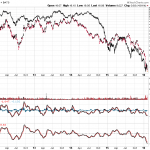Central banks in Australia, China, Taiwan and Indonesia meet to discuss policy next week but the focus will be on Japan, which could change its forward guidance to signal an imminent rate hike. Pexels Bank of Japan: End of an era?The Bank of Japan’s monetary policy meeting next week will be the most closely watched macro event by market participants. Market opinion is sharply divided between a March and April hike. The likelihood of a March rate hike continues to increase as large corporates are expected to raise wages on the back of strong corporate profits and policy push. Opinions appear to be divided among board members, with Governor Kazuo Ueda’s opinion likely to be the most important. Japanese companies including Toyota, Honda, Nippon Steel and ANA Holdings have promised workers the largest pay rise in more than three decades.So, there is not much that could prevent the BoJ from raising rates in the current macro situation, apart from sluggish private consumption. But it is something that Governor Ueda specifically cited as a major concern in parliament earlier this week. We believe that the BoJ will be watching for solid wage growth to boost private consumption. Furthermore, ending the negative interest rate policy requires close policy coordination and consensus with the government, but recent government comments suggest that it is not yet convinced of an end to deflation. In addition, the March rate hike will quickly build market expectations for further rate hikes in the near future, and the issue of pacing the rapid rise in market rates will also influence the BoJ’s policy change.Thus, we believe that an April hike is slightly more likely than a March hike. Next week, we expect the BoJ to change its forward guidance and scrap the yield curve control policy but keep its government bond purchase program. RBA likely on holdThe Reserve Bank of Australia’s (RBA) March rate meeting precedes February labour data later next week. As the RBA will likely have advance notice of what that labour report contains, the statement and briefing may provide some clues about the labour report. At the moment, the RBA is still way off the point of considering rate cuts, and the RBA maintained a faint bias towards tightening at the last meeting, even if this was watered down a bit. Since then, the run of data has been quite helpful to those talking up the prospect of more and earlier rate cuts, with lower-than-expected inflation and some signs of a slowdown in the macro numbers, including GDP and the labour market. It would be a very stark signal if the RBA were to remove that bias at its March meeting, and it may be worried that this would send too strong a signal at this stage. However, some further watering down and hints about a move towards neutrality might be in order. China and Taiwan both expected to keep monetary policy unchangedThe People’s Bank of China’s decision on the loan prime rate is set for next Wednesday. PBoC Governor Pan Gongsheng signalled at the Two Sessions that an RRR cut is likely in the months ahead, and we expect one more 10bp cut to the 1-year loan prime rate in the first half of the year to support a broader supportive policy rollout. However, maintaining a signal for “prudent monetary policy” appeared to indicate lower odds for an imminent rate cut in March.Taiwan’s central bank will set its benchmark discount rate on Thursday. We expect rates will be held steady at 1.875%, as a higher-than-expected inflation level in February and a continuingly unfavorable interest rate spread with most global economies will restrain Taiwan’s monetary policy in the near term. Bank Indonesia to extend pauseBI will likely keep rates unchanged at 6% at their upcoming meeting. An upward surprise to the latest CPI inflation report suggests that BI will refrain from cutting policy rates anytime soon. BI has however shared that it would be open to cutting policy rates later in the year to support growth. First look at China’s 2024 hard dataOn Monday, China will publish its industrial production, retail sales, and fixed asset investment numbers for January and February, which will be our first look at the major hard data. We are expecting a small uptick for industrial production to 5.0% year-on-year, and fixed asset investment to 3.2% YoY, but a moderation in retail sales to 4.6% YoY at the start of the year. The unemployment data will also be published, with the surveyed jobless rate expected to stay stable at 5.1%.More By This Author:The Commodities Feed: Copper Surges To 11-Month High FX Daily: Short-Dated Yields Point At A Higher Dollar Asia Morning Bites For Thursday, March 14
Pexels Bank of Japan: End of an era?The Bank of Japan’s monetary policy meeting next week will be the most closely watched macro event by market participants. Market opinion is sharply divided between a March and April hike. The likelihood of a March rate hike continues to increase as large corporates are expected to raise wages on the back of strong corporate profits and policy push. Opinions appear to be divided among board members, with Governor Kazuo Ueda’s opinion likely to be the most important. Japanese companies including Toyota, Honda, Nippon Steel and ANA Holdings have promised workers the largest pay rise in more than three decades.So, there is not much that could prevent the BoJ from raising rates in the current macro situation, apart from sluggish private consumption. But it is something that Governor Ueda specifically cited as a major concern in parliament earlier this week. We believe that the BoJ will be watching for solid wage growth to boost private consumption. Furthermore, ending the negative interest rate policy requires close policy coordination and consensus with the government, but recent government comments suggest that it is not yet convinced of an end to deflation. In addition, the March rate hike will quickly build market expectations for further rate hikes in the near future, and the issue of pacing the rapid rise in market rates will also influence the BoJ’s policy change.Thus, we believe that an April hike is slightly more likely than a March hike. Next week, we expect the BoJ to change its forward guidance and scrap the yield curve control policy but keep its government bond purchase program. RBA likely on holdThe Reserve Bank of Australia’s (RBA) March rate meeting precedes February labour data later next week. As the RBA will likely have advance notice of what that labour report contains, the statement and briefing may provide some clues about the labour report. At the moment, the RBA is still way off the point of considering rate cuts, and the RBA maintained a faint bias towards tightening at the last meeting, even if this was watered down a bit. Since then, the run of data has been quite helpful to those talking up the prospect of more and earlier rate cuts, with lower-than-expected inflation and some signs of a slowdown in the macro numbers, including GDP and the labour market. It would be a very stark signal if the RBA were to remove that bias at its March meeting, and it may be worried that this would send too strong a signal at this stage. However, some further watering down and hints about a move towards neutrality might be in order. China and Taiwan both expected to keep monetary policy unchangedThe People’s Bank of China’s decision on the loan prime rate is set for next Wednesday. PBoC Governor Pan Gongsheng signalled at the Two Sessions that an RRR cut is likely in the months ahead, and we expect one more 10bp cut to the 1-year loan prime rate in the first half of the year to support a broader supportive policy rollout. However, maintaining a signal for “prudent monetary policy” appeared to indicate lower odds for an imminent rate cut in March.Taiwan’s central bank will set its benchmark discount rate on Thursday. We expect rates will be held steady at 1.875%, as a higher-than-expected inflation level in February and a continuingly unfavorable interest rate spread with most global economies will restrain Taiwan’s monetary policy in the near term. Bank Indonesia to extend pauseBI will likely keep rates unchanged at 6% at their upcoming meeting. An upward surprise to the latest CPI inflation report suggests that BI will refrain from cutting policy rates anytime soon. BI has however shared that it would be open to cutting policy rates later in the year to support growth. First look at China’s 2024 hard dataOn Monday, China will publish its industrial production, retail sales, and fixed asset investment numbers for January and February, which will be our first look at the major hard data. We are expecting a small uptick for industrial production to 5.0% year-on-year, and fixed asset investment to 3.2% YoY, but a moderation in retail sales to 4.6% YoY at the start of the year. The unemployment data will also be published, with the surveyed jobless rate expected to stay stable at 5.1%.More By This Author:The Commodities Feed: Copper Surges To 11-Month High FX Daily: Short-Dated Yields Point At A Higher Dollar Asia Morning Bites For Thursday, March 14














Leave A Comment